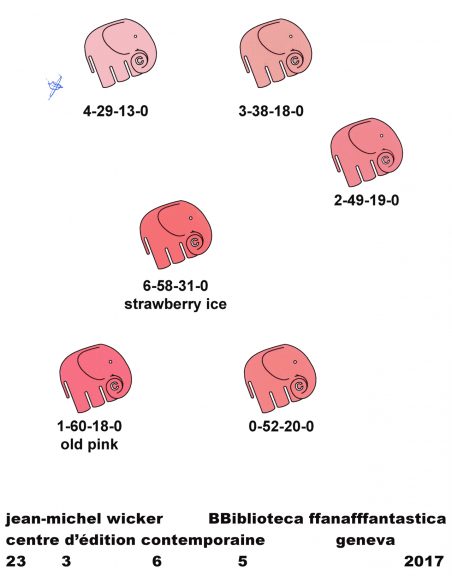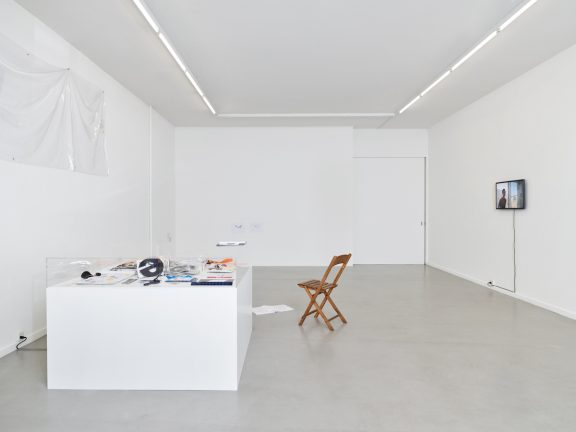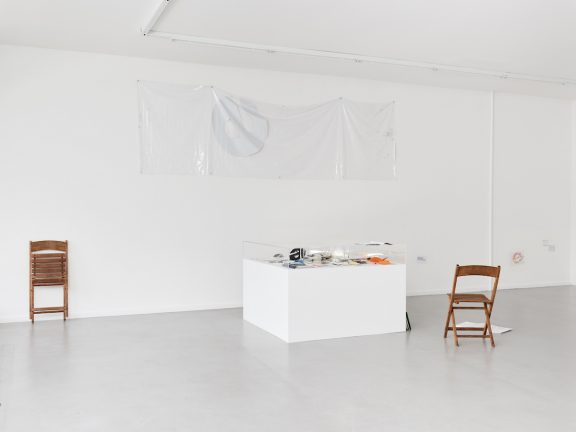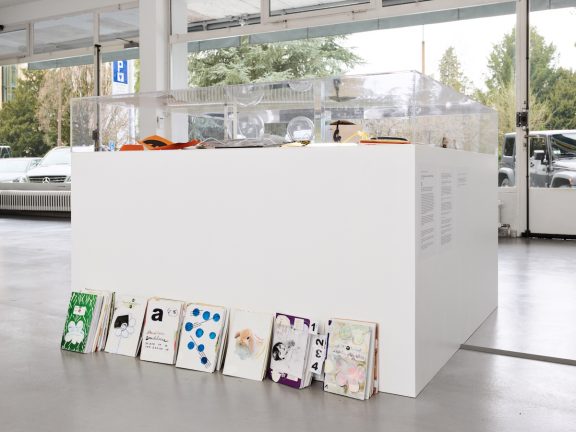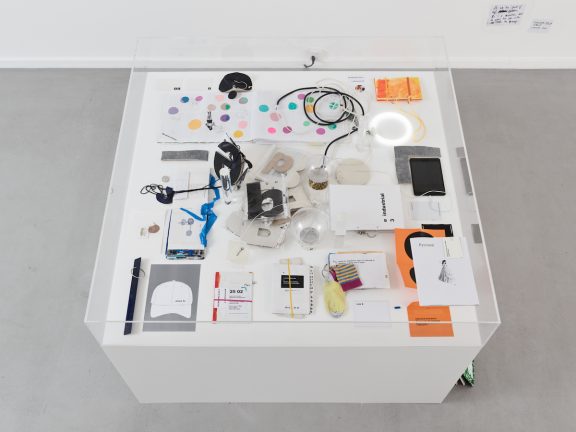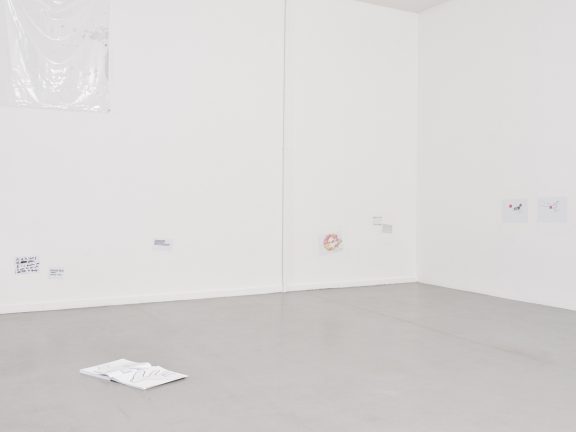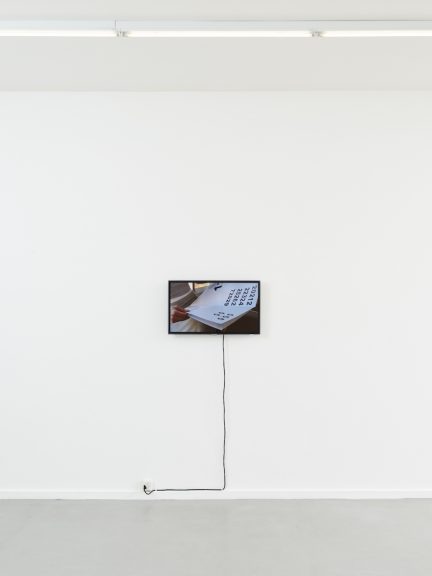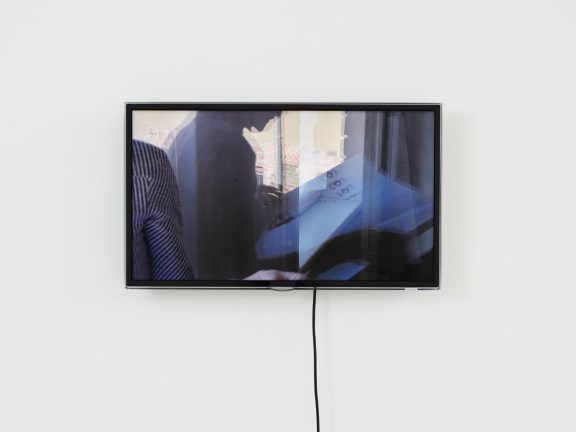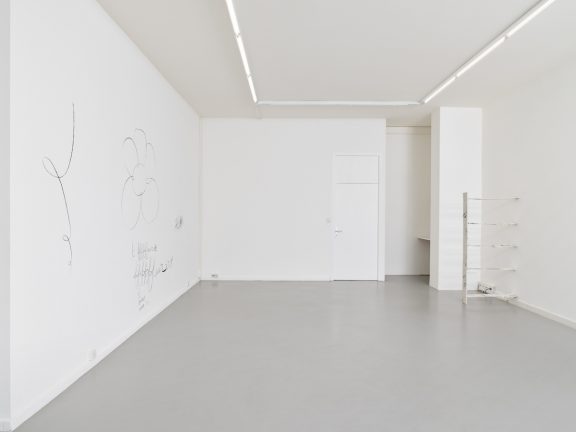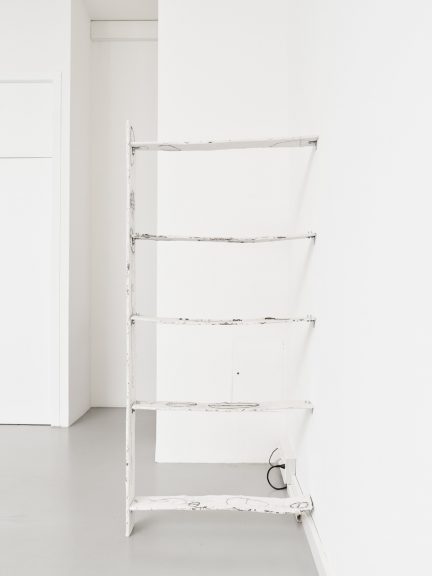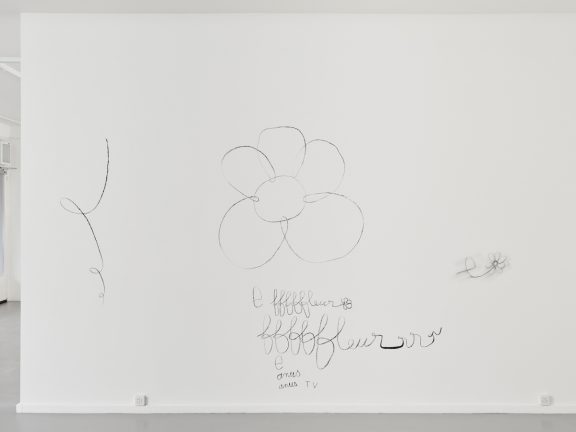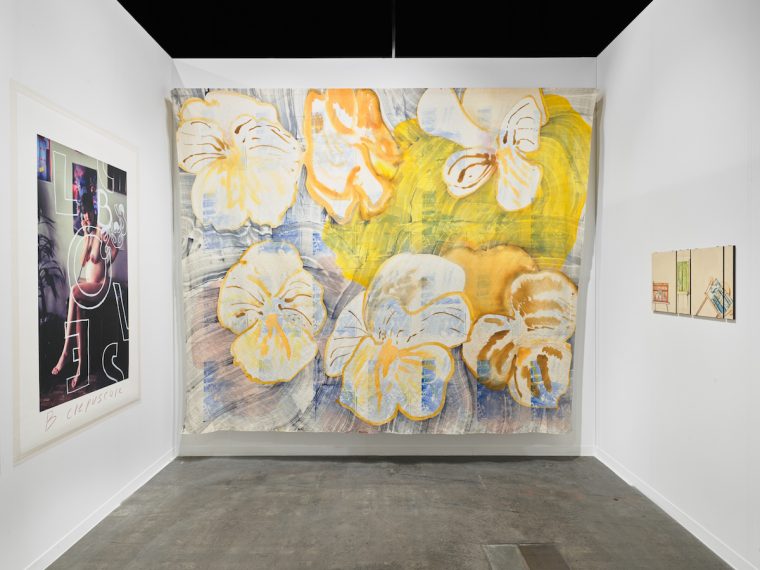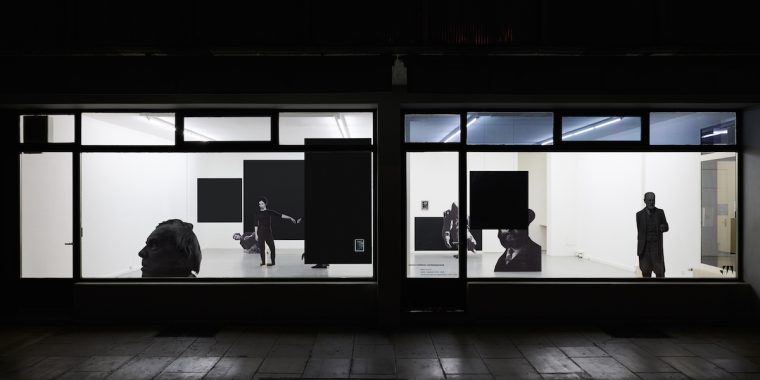Jean-Michel Wicker
BBiblioteca ffanafffantastica
Opening Thursday March 23, 2017 from 6 PM till 9 PM
Exhibition from March 24 to May 6, 2017
Jean-Michel Wicker’s exhibition BBiblioteca ffanafffantastica brings together several works involving the medium of print for which the artist has worked out a number of iterations, including fanzines, scrapbooks, antibooks, book-objects, and flyers. The display will also feature supports, both literal and figurative, that have something to do with books, and other elements that extend the gesture of consultation, reading and writing, even the function of storage. This includes bookcases, display stands, showcases, tables and chairs. Other objects or useful ordinary materials like electric wires, clothing, key rings, neon lights, lamps and tarps will be transformed, cobbled together, and combined with a wide range of supports in their usual and unsurprising form or reappropriated and put to other uses. Those supports include paper, cardboard, plastic, papier-mâché, and shells. In a practice that entails manipulating words and letters, an approach that could be likened to Lettrism or Concrete poetry, Wicker has been extending and deconstructing horizontally and radically the conventions of the print medium, the framework and codes that govern writing, through endless plays on letters and the invention of a personal notation and typography. Beyond the page and the book, Wicker goes further, taking over the exhibition space and proposing environments that mix and merge publications, sculptures, furniture, lighting, vitrines and display tables, and temporary constructions. The artist also explores other spaces, though far less systematically, including the space of performance (anti-live performance n°2: emcee jeanne moreau chante mimi e kleine, Artists Space, New York, 2013) and film. His exhibition at the CEC features his film anti theater 1 (2014), a portrait “in chapters” of a slow, inner reading in silence. The screening is combined with a series of scrapbooks in display cases.
Wicker injects into all of his work certain letters (e, b and B) like viral recurrent elements, thus recreating an alphabet that multiplies and diffracts in both the exhibition space and books. The book is considered in its most alternatives forms, even reinvented in many cases, with, for example, the A4 fanzine (Lolita’s fanzine, 2007) and the flyer, but also the newspaper or magazine, artist’s book, album (scrapbook), paper scroll (scroll book or scroll collage, for sale by the meter—70 m long for the exhibition e industrial, Cubitt Gallery, London, 2014), poster, and note or collage book. These “books” can be unique or produced in series, but are frequently reused, revisited, and reworked in a continual process that runs its course when each series is quietly exhausted (the artist leaves the end unannounced), or even destroyed. These album-books are like personal journals or diaries. Playing with multiple typographic combinations and layouts that spill over several pages, Wicker’s works, his books and more specifically our edition of #picturebook1, disseminate comments on and questions about recurring themes like identity, sexuality, autonomy, freedom, resistance, and transgression in the larger and richer field of culture and anti-culture. While the different assemblages of letters offer multiple typographic études like musical scales, the repetitive system is put to the test, creating nearly abstract geometrical pages. The artist’s #picturebook1 likewise features sketches and freer drawings, and lays out images, details, and signs that appear from one page to the next, a surprising variation on the page layout. And like inserts or pages printed outside the confines of a book, Wicker’s paintings and collages also develop in series. They may change into full-blown structures or grow in thickness, frequently being covered in papier-mâché as if smothered in paste, and become objects. The printed works are mixed in with temporary mechanical sculptures in installations which often include furniture that is made by hand from humble, so-called “poor” materials.
Springing from the book format, the surface of the page, the repetition of letters (e, b and B) and the reappropriation or creation of images, this stream of typographic combinations, collages (images borrowed from magazines, ads, record covers), plays on graphic design (acronyms, logos), quotes and self-quotes, mixes, juxtaposes, repeats, regenerates, and circulates on several supports (print work mostly), as well as on the internet (website: www.eeeeeeeee.ee), and through the role of the publisher (le edizioni della luna, Nice, 2006-2008; le edizioni della china, Berlin 2008-2011; Ballabella papers, Berlin, since 2009) and in multiple collaborations with writers and musicians. The exhibition space can also become a space for projecting this diffracted writing. The page can also be a garden (Casa Jungle, Nice, 2003-2009).
“i see life (or reality) as a comic book or cartoon, and exhibitions as fanzines (made in 2 dimensions, shown in 3D and experienced in 4 ; the form is an environment, an image with multiple points of view that the visitor can experience on his own) politics are xeroxed (xeroxed politics).” Jean-Michel Wicker
